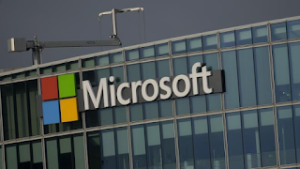A massive worldwide outage that impacted Microsoft services on July 19, 2024, caused extensive disruptions in a number of industries, including healthcare, finance, and aviation. A faulty upgrade of CrowdStrike cybersecurity software was found to be the main culprit, causing significant operational disruptions and system breakdowns in Microsoft Windows
Reasons for the Blackout
The incident started with an update to the CrowdStrike Falcon agent (csagent.sys), which unintentionally resulted in Microsoft Windows instances and applications experiencing connectivity problems and system reboots. In particular, systems that made extensive use of Microsoft’s cloud services saw unexpected behavior as a result of this logic flaw in the upgrade. Despite initial concerns, the CEO of CrowdStrike clarified that a software update fault was the cause of the problem rather than a cyberattack.

Credit: twitter.com
Effect on Diverse Industries
1. Air Transport: Global delays and cancellations of flights were caused by the outage, which had a significant impact on air traffic. Due to the malfunctioning scheduling, booking, and check-in systems that depend on Microsoft’s cloud infrastructure, airports experienced substantial disruptions. Passengers experienced severe inconvenience as a result, and airlines experienced operational disarray.
2. The Financial Industry: The majority of the outage also affected financial institutions. There were disruptions to trading systems and transaction processing services, a large number of which rely on Microsoft’s cloud services. This led to delays in financial transactions and trading, which increased market volatility.
3. Medicine:Hospital systems and electronic health records that rely on Microsoft’s cloud services experienced outages, which caused disruptions to medical services. This affected access to necessary medical treatment, patient care, and scheduling of appointments.

Credit:BBC News
Supervision of Regulations and Standards:
The possibility of such failures can be decreased by establishing industry-wide standards and regulatory monitoring for software upgrades and cloud services. These measures can guarantee a baseline of security and dependability
1.Enhanced Mechanisms for Testing and Rollbacks:It is imperative to enhance the testing methods for upgrades, particularly those that affect key infrastructure. When an error occurs, having strong rollback mechanisms in place can enable fast reversion to earlier stable states.
2.Dependency Diversification:Risk can be reduced by lowering reliance on a single source. Resilience can be increased by promoting a more diverse ecosystem in which vital systems are not exclusively reliant on Microsoft’s infrastructure.
3.Increased Cooperation Amongst Providers:Better coordination and comprehension of possible consequences from upgrades can be achieved by closer cooperation between cybersecurity companies such as CrowdStrike and service providers such as Microsoft.
4. Regulatory Oversight and Standards:Software upgrades and cloud services can benefit from the introduction of industry-wide standards and regulatory oversight, which can guarantee a baseline level of security and dependability and lessen the probability of such outages.
5. Public-Private Collaborations: In order to guarantee the continuation of vital services, governments and businesses can collaborate to establish mechanisms for quick response and recovery in the case of such disruptions.
6.Increased Investment in Resilience: Constant investment in redundant systems and failover capabilities, as well as other resilience-enhancing measures, can assist manage and lessen the effects of unplanned interruptions.
Diminishing Technological Sector Monopoly
The following actions can be taken into consideration in order to mitigate the risks related to the concentration of power in the hands of a small number of powerful tech companies, such as Microsoft:
1. Encouraging Interoperability and Open Standards:Reduced vendor lock-in and increased competition can result from promoting the use of open standards and interoperability.
2. Supporting Smaller Providers: Incentives and policies that assist cybersecurity companies and smaller cloud service providers can boost market competitiveness and innovation.
3.Regulatory Measures:By putting in place regulations that guard against unfair competition and prohibit anti-competitive behavior, monopolistic tendencies can be broken and market power can be distributed more fairly.
4.Encouraging Public Sector Alternatives:To counter major tech companies, governments should create and promote public sector alternatives, adding more
Conclusion
The dangers present in highly integrated and dependent IT ecosystems were highlighted by the July 19, 2024, Microsoft-CrowdStrike Outage. We may strive toward a more robust and diverse digital infrastructure that is better prepared to tackle upcoming difficulties by taking a multifaceted approach that incorporates technological, regulatory, and market-based measure.
Neelima Jain
Check out the latest:Understanding the Microsoft Azure and Microsoft 365 Cyber Attack on July 30th





Wonderful post! The Microsoft-CrowdStrike disaster demonstrates how crucial effective security is for everyone. Understanding what went wrong and its consequences is critical. It is critical that they learn from this in order to improve and rely on their systems in the future. Keep up the wonderful work.